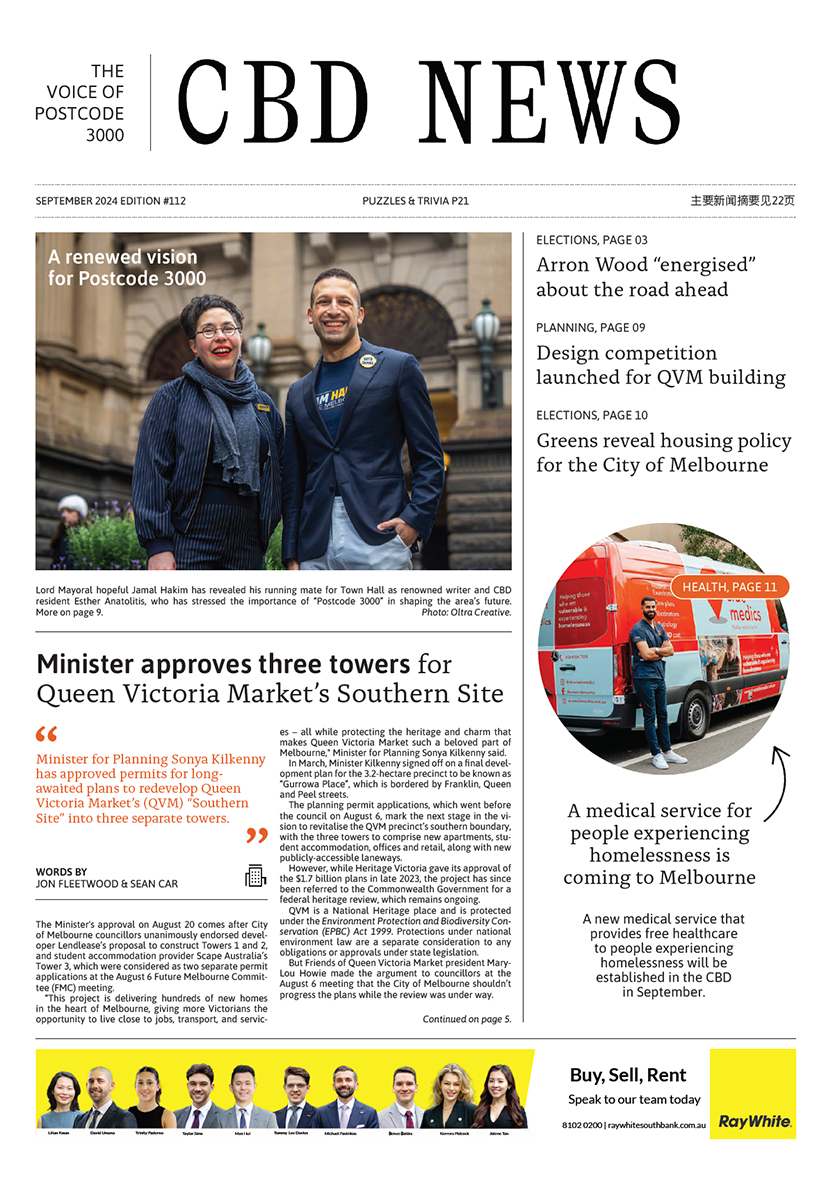City of Melbourne unveils next urban forest plan for the CBD
The City of Melbourne is seeking community feedback on new draft “urban forest” precinct plans for the central city.
The plans mark the next stage of the council’s Urban Forest Strategy, which sets ambitious 2040 targets to protect and grow the city’s canopy cover, help cool the city, increase biodiversity, and boost amenity to support business and tourism.
The council said that the vision for an urban forest in the CBD aimed to bring a cohesive design element to the streets of the Hoddle Grid and to maximise future design opportunities.
“Future designs will account for large-scale projects such as Greenline, which will have a big impact in shaping the liveability of the central city into the future,” the council report tabled at the July 9 Future Melbourne Committee (FMC) meeting said.
The draft plans are available for public comment via an online survey on the Participate Melbourne website until August 8.
The City of Melbourne’s environment portfolio lead Cr Rohan Leppert said he was pleased that the City was striving towards “ambitious” 2040 targets, adding that if the latest vision was anything like the award-winning 2013 plans, they would be the “single best thing” that the council did to connect with each local community.
The council is actively working to become a leader in urban forestry by 2040 by aiming to increase canopy cover to 40 per cent and implementing strategies that ensure that 90 per cent of the municipality’s tree population is healthy.
Since the strategy’s implementation in 2012, tree numbers have risen to more than 80,000, 1304 of which have been planted in the CBD including the completion of 32 major street tree-planting projects.
According to the council's draft plan, continuing to increase the canopy cover is essential to combat the heat risks that the CBD faces due to its buildings, roads, and infrastructure absorbing heat.
Without intervention, temperatures in the CBD are expected to reach levels associated with heat-related illness in vulnerable populations more often and for longer than in surrounding suburban and rural areas.
To help improve the health of the growing urban forest, the council has also created a diversity target that places restrictions on what can and can’t be planted.
The Central City Urban Forest will comprise no more than five per cent of any tree species, no more than 10 per cent of any genus, and no more than 20 per cent of any one family.
Many locals have previously urged the council to fill the CBD’s streets and buildings with diverse plants to boost sustainability and reflect the community’s cultural backgrounds and Indigenous culture.
The CBD currently has a high proportion of exotic trees and the lowest proportion of Indigenous trees in the municipality.
In a survey conducted by the council, 90 per cent of respondents agreed that more native trees were needed in the city and that there was a need for a greater diversity of trees.
Targeted feedback will be sought from contributors, along with widespread promotion to capture views and inform the final versions of the precinct plans, which will be considered by councillors in February 2025.
According to Cr Leppert, one of the key reasons behind this success is community consultation.
“The best thing about this is that it's done with the community. The workshops inform these draft plans, and consultation will now happen on these draft plans,” he said.

Renewed Arron Wood “energised” about the road ahead at Town Hall







 Download the Latest Edition
Download the Latest Edition